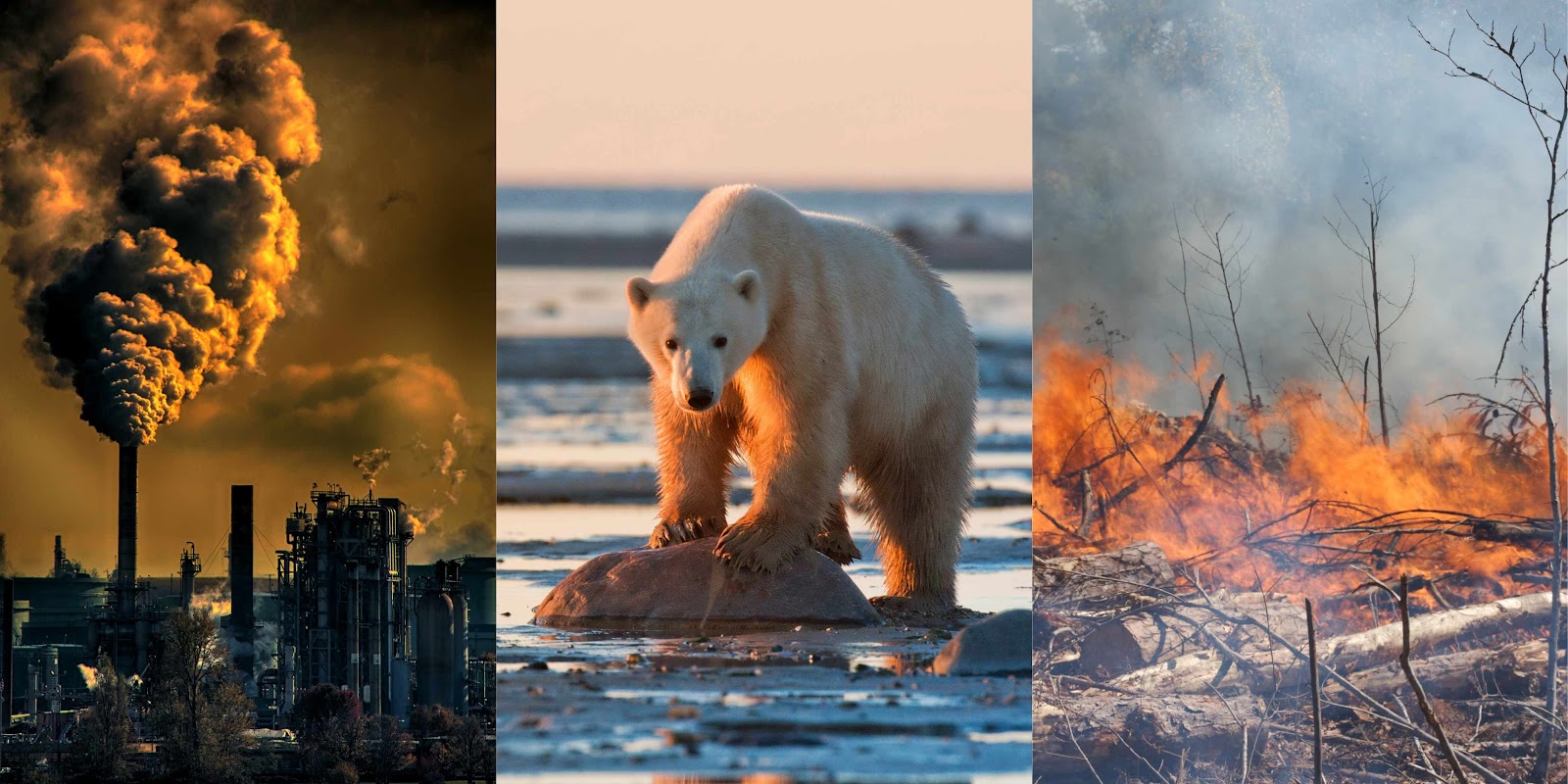THOUGH FOR A HOT SUMMER
THOUGHT FOR A HOT SUMMER
Nikunja Bihari Sahu
The hot summer days are unceremoniously back! With the daytime temperatures inching to 400C so early in the season, the current season promises to be painfully hot. Gone are the days when the summer in our childhood village days was so pleasant and soothing. The cool refreshing southerly breezes of the evening, the cuckoo’s melodious song in the meadows, cricket’s tune reverberating the quiet afternoons, the smell of mango buds swept away by the winds and people enjoying playing cards under moon-lit sky till late night - all revive the sweet memories of the ancient village life. So what has gone wrong these days?
Scientists are attributing this unusual situation to a relatively recently known phenomenon called Global Warming which is emerging as perhaps the greatest environmental challenge of the twenty-first century. Around 1980, scientists discovered a tantalizing phenomenon that the mean global temperature of the Earth was on the rise. According to IPCC, our planet has warmed by 0.60C over the last century and it is projected that the Earth’s mean temperature is likely to rise 2.4 to 4.8 0C by the year 2100. This will seriously upset the delicate ecological balance of the planet and the basic life support system of our biosphere. The consequences are catastrophic some of which are already becoming visible: melting of glaciers and rising of sea level, climate change and its manifold impacts like change in precipitation patterns, untimely monsoon onsets, increase in extreme weather conditions of floods, droughts, heat waves, hurricanes and long term effects like lowering of agricultural yields, species extinction, an increase of vector-borne diseases of Dengue and Malaria, social conflicts over issues like water etc. The fact that 11 of the warmest years of the past 125 years occurred only after 1990 with 2005 being the warmest year on the record tells amply the extent of nature’s fury.
This bizarre effect has gravely affected the lives and livelihoods of people around the world. A man in the Maldives worries about relocating his family due to the sea level rise, a farmer in Kansas struggles for bread as prolonged periods of drought-ravaged his crops, a fisherman on the Niger river wonders why his fishing net went empty, a child in New Jersey worries how she lost her home to a super-storm and a woman in Bangladesh struggled to get fresh water due to more frequent flooding and cyclones: these are few of the enormously many victims of global warming. Intense heat waves in 2003 took a toll of around 35,000 people in the whole of Europe including 15,000 lives in France alone. About 700 million people in India depending directly on climate-sensitive sectors such as agriculture, forests and fisheries for their livelihood will directly face the brunt of the consequences of climate change induced by global warming. Even animals are not spared from the wrath of nature’s fury. The Polar bear in the melting ice sheets of the Arctic, the Royal Bengal tigers in India’s fragile mangrove forests of the Sundarbans, the Right whale in the plankton-poor waters of the warming North Atlantic, and the Orangutan in Indonesian forests segmented by frequent bushfires and droughts are some of the survivors of this tell-tale story.
Global warming has proved to be very harsh to our state Odisha also. Atmospheric temperature is consistently surging with summer seasons turning out to be painfully unbearable. Low-pressure weather conditions and depressions are becoming regular incidents causing unpredictable rainfall patterns across the state much to the woes of farmers. Who can forget the scorching hot summer days of 1998 when hundreds of people died of Sunstroke and the devastating Super cyclone of 1999 that claimed thousands of lives in coastal Odisha. Frequent floods and famines in the following years battered the lives of the people and shattered the economy of the state. The sea has also posed a serious threat to the state. The Bay of Bengal is expanding towards the coastal landscape at an alarming rate taking many villages and farmlands into its grip thereby seriously threatening the livelihood of the native villagers.
Scientists have reached a consensus that the emission of certain greenhouse gasses (like Carbon dioxide, Methane, Nitrous Oxide, etc) is responsible for this unusual warming of our planet. These gases have never been a threat to mankind since the long history of our planet as they used to trap some of the Sun’s radiant heat and help maintain the minimum temperature on Earth (18 0C) necessary for the survival of life. Without these gasses, the Earth would have been incredibly colder with its mean temperature dropping to -26 0C where no life could exist! However, these gases are constantly accumulating in our atmosphere far beyond the safety limit since the Industrial revolution of the eighteenth century. These are mostly produced by the burning of fossil fuels like coal and petroleum which were initially used as raw materials for giant hungry machines of various industries and later for the generation of electricity and other forms of energy and as fuels for automobiles. While the increase of Carbon dioxide in our atmosphere is 11%, Methane accounts to a whopping 149% since the Industrial revolution. While global Carbon dioxide emission increased by 3 times during the period 1960 to 2002, there has been a dramatic increase of the gas by 33% since 1986. Our atmospheric Carbon dioxide level is currently estimated at 385 ppm which is the highest in the last 6,50,000 years of our planet's history. According to a projected report of the IPCC, this will reach a record high between 541 to 970 ppm by the year 2100. Isn’t this quite alarming?
While greenhouse gas emissions account for three-fourths of global warming, a large portion of the rest is due to deforestation. Forests used to absorb large quantities of Carbon dioxide from the atmosphere and keep its level in control. As forests are cleared every day to give way for concrete jungles, Carbon dioxide absorption on the planet is seriously affected leading to its uncontrolled build-up in the biosphere. Some of the global warming also results from the melting of Arctic sea ice which has been a key factor in stabilizing the global climate. Melting of sea ice (Ice is a good reflector of radiant heat) reduces the amount of solar energy reflected back into space thereby contributing to global warming.
Keeping these grave consequences in mind, world leaders have met at several forums in the past to find a solution to the menace of emission of greenhouse gasses with the Rio Summit in 1992 serving as the launching pad. Kyto protocol, an international treaty signed under United Nation's Framework Convention on Climate Change (UNFCCC), is an important milestone in this regard. Signed in 1995, it sets binding obligations on industrialized nations to reduce emissions of 6 greenhouse gases within a time frame. According to the provisions of the protocol, industrial nations have to cut down their emission levels by 5.2% as compared to the 1990 base level during the period 2008 to 2012. Accordingly, a target of 7% for the US, 8% for the European Union, and 6% for Japan was earmarked and developing countries like China and India were exempted from any target. The Agreement came into force in 2005 and a total of 181 nations (accounting for more than 55% of the world’s greenhouse gas emissions) have implemented its recommendations by the year 2008. However, the USA, the largest emitter of greenhouse gasses in the world, rejected the treaty because of the exclusion of major populous countries of the world like China and India from the provisions. Before the expiry of the term of Kyoto protocol in 2012, the Parties again met at the Danish capital Copenhagen in 2009 to renew their commitments on carbon emission curbs.
The historic Copenhagen Accord (drafted by the United States, China, India, Brazil and South Africa), recognizing climate change as the greatest challenge of the century, urged for actions to keep any temperature rise to below 2 °C by the year 2050 as compared to pre-industrial times . However, the document was not legally binding on any country and did not contain any definite roadmap for reducing CO2 emissions for developed nations. The Paris Agreement signed in 2015 by 196 Parties of the world at the COP 21 summit was a landmark event as it, for the first time, put a legally binding international obligation on nations to combat climate change by limiting global warming to well below 2°C and pursuing efforts to limit it to 1.5°C. While the Kyoto Protocol required only developed countries to reduce emissions, the Paris Agreement recognized that climate change is a shared problem and called on all countries to set emissions targets. The Glasgow Climate Pact signed during the COP 26 that followed called for more greenhouse gas emission cuts and promised more climate finance for developing countries to adapt to climate impacts. However, owing to late interventions from India and China that weakened a move to end coal power and fossil fuel subsidies, the conference ended with the adoption of a less stringent resolution than anticipated. Nevertheless, the Pact was the first climate deal to explicitly commit to reducing the use of coal.
Given the turmoil and turbulence in the world political scenario as mentioned above, there is hardly any sight seen for a lasting solution in near future. Our mantra should be to ‘Think globally and Act locally’. We should cut down our energy consumption at individual levels and use appliances that are energy efficient. We should explore green and renewable sources of energy in place of conventional fossil fuels. We should turn off our lights or computers whenever not in use saving electricity that entails less emission of gasses. Further, we should use bicycles (which are good for our health) rather than cars or bikes to travel short distances and mass transport vehicles like buses should be preferred in place of individual conveyances like bikes or cars to save energy. Finally, we should plant more trees to keep our environment clean and green.
Nikunja Bihari Sahu
Education Officer
Regional Science Centre
Pt Jawaharlal Nehru Marg
Bhubaneswar-751013




Comments
Post a Comment